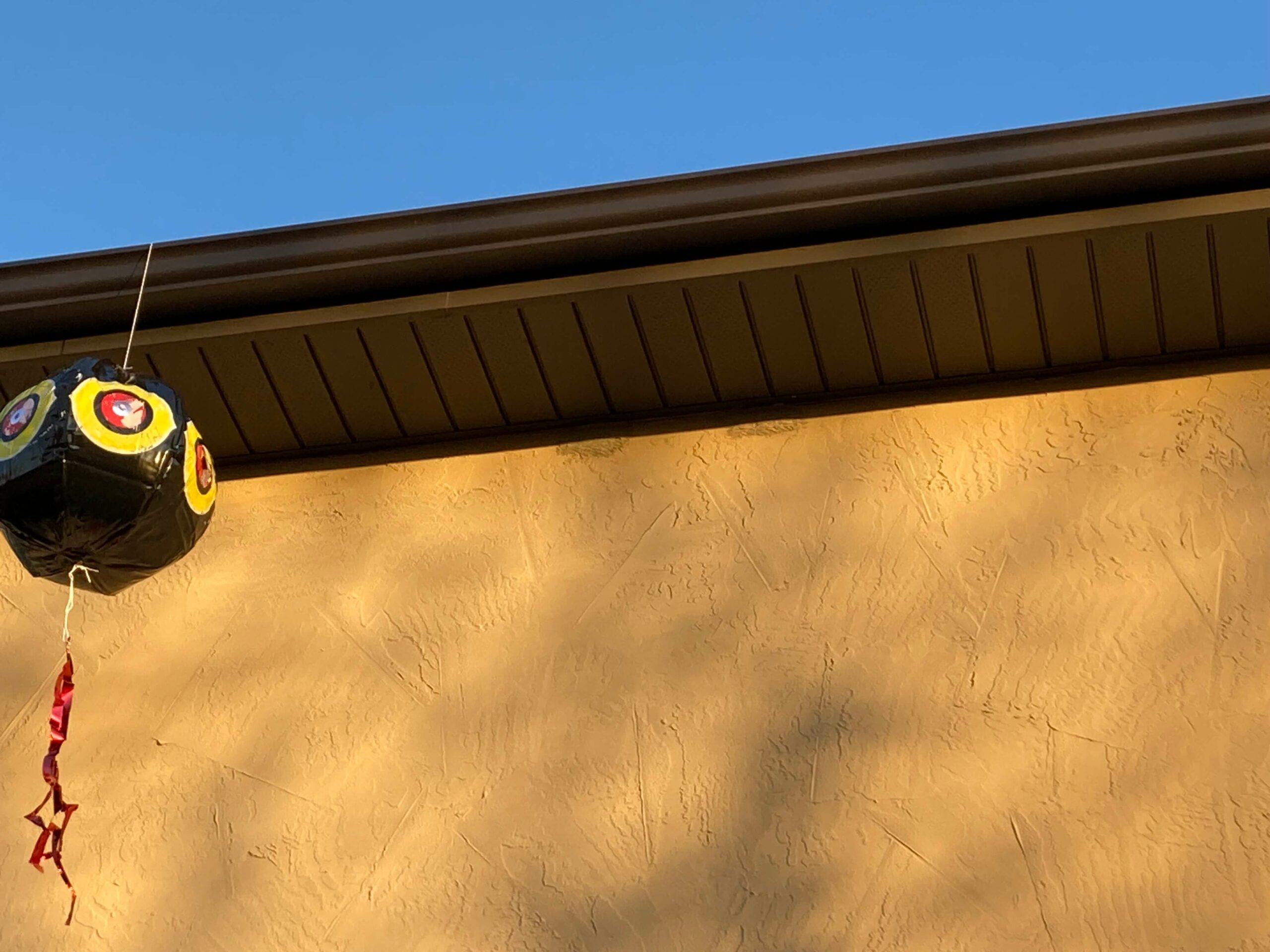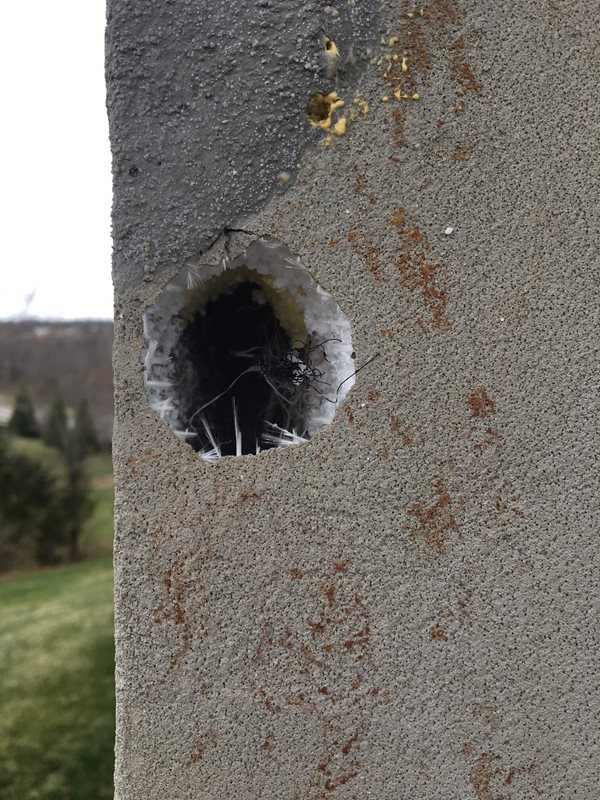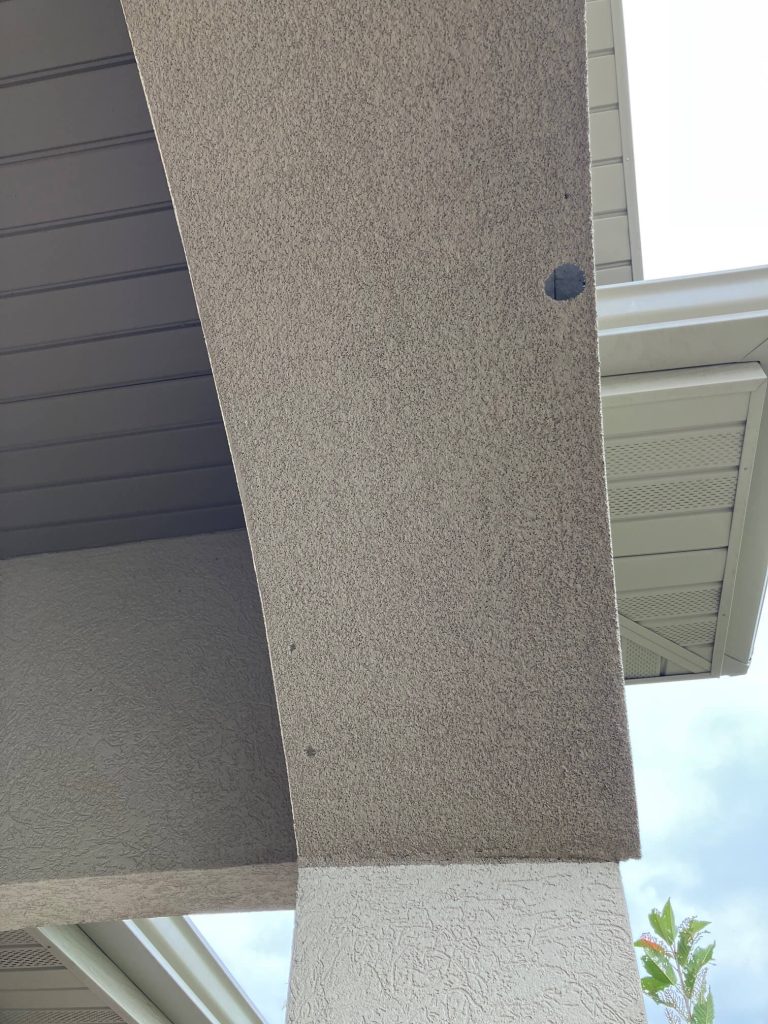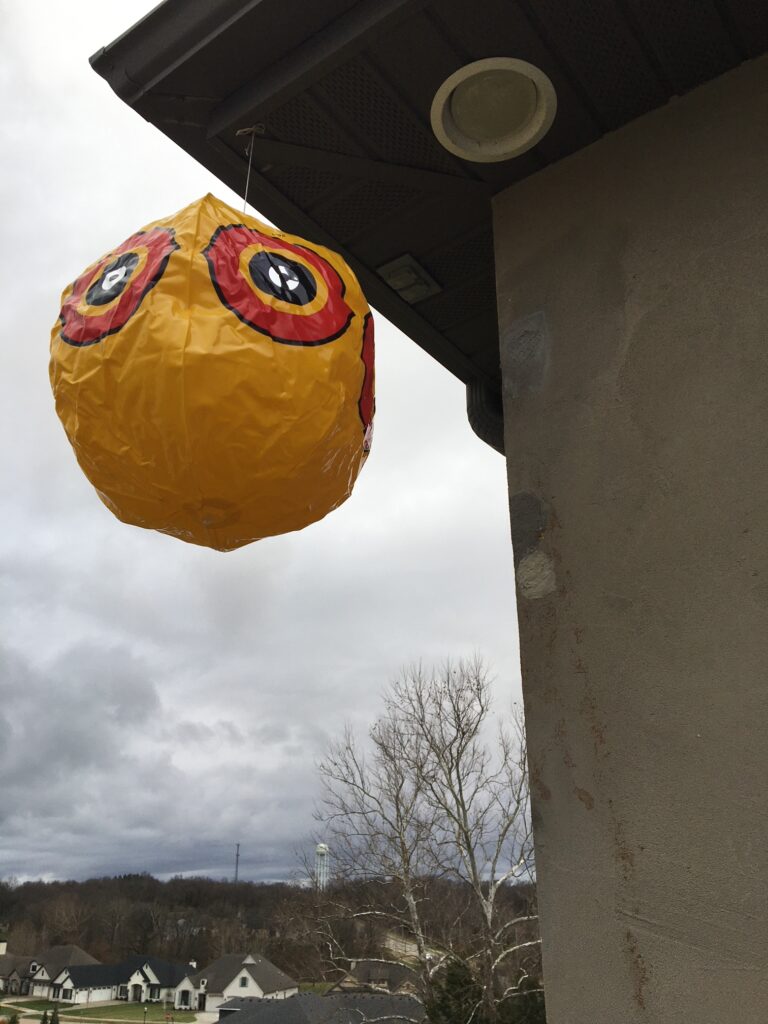Woodpecker Removal and Damage Repair

There are seven species of woodpeckers in Missouri. The most common are the red-bellied and downy species. The largest woodpecker in Missouri is the pileated woodpecker which lives near old-growth timbers. Most people experiencing woodpecker damage live in or within half a mile of a wooded area containing large hardwood trees. As more people and housing developments move into wooded areas, woodpecker damage problems will likely increase.
Woodpecker Drumming – First Sign of a Woodpecker
A woodpecker’s rhythmic pecking is called drumming. Most people correctly assume drumming is to help find food. Woodpeckers drill holes with their beaks in wooden structures for several reasons.
A woodpecker taps on a tree, listens for movement of insects under the bark, and drills only when it hears sound inside. This behavior saves the bird the effort of drilling into numerous trees only to find them empty.
If the woodpeckers are drilling many small holes, the siding is probably infested with insects that appeal to woodpecker appetites. Similarly, a woodpecker taps on trees to find one suitable for nesting.
Woodpeckers also drill large holes in wood siding for nests. Woodpeckers use their bills to chisel through or under bark to chisel out nesting and night-roosting cavities.
Drumming also makes their presence known. They instinctively make their noise on trees, branches, drain spouts, utility poles, streetlights, TV antennas, silos and other structures that resonate loudly. This drumming establishes their territory, similar to most other birds’ singing, and may also attract a mate, which is why drumming activity is at its highest in spring.
Woodpeckers can cause various problems for homeowners in Columbia.
Common Woodpecker Problems for Homeowners

Property Damage: Woodpeckers drum on surfaces, including siding, trim, and wooden structures. This persistent drumming can cause damage to the wood, creating holes, and weakening the structural integrity of the affected areas.
Noise Disturbance: The constant drumming and tapping made by woodpeckers can be loud and disruptive, especially if they peck near bedrooms.
Nesting: Woodpeckers sometimes choose to build their nests in houses, particularly in the rotted or damaged wood siding. This can lead to further damage and potential problems with infestations of other pests.
Wildlife Conflicts: Woodpeckers may compete with other cavity-nesting birds for limited nesting sites, which can escalate territorial disputes and cause problems for other bird species in the area.
Attracting More Pests: The holes created by woodpeckers can attract insects, such as termites and ants, which may then infest the damaged wood. Mice, rats, squirrels, and snakes can use woodpecker holes to get into your attic and wall spaces.
Woodpecker Control from Critter Control of Missouri
Proper bird control does not rely on traps. Woodpeckers are a protected species so we use an integrated approach of deterrents and repellents to encourage the woodpecker to fly away. Our ongoing support will keep woodpeckers away from your home and repair any damage done.
Visual Deterrents: Hanging shiny objects like reflective tape, CDs, or Mylar balloons near problem areas can create a visual deterrent. The movement and reflections tend to intimidate woodpeckers. Additionally, you can try installing scarecrow decoys or eye balloons with fake predator eyes.
Auditory Deterrents: Using sounds that mimic woodpecker distress calls or predator calls can scare away woodpeckers. You can find recordings of these sounds online or use a wind chime or wind spinner to create noise and vibrations that discourage woodpeckers.
Physical Barriers: You can cover the affected areas with bird netting or hardware cloth, ensuring that the mesh is at least 2 inches away from the surface to prevent the woodpeckers from accessing the wood.
Taste repellents: Woodpecker repellent sprays specifically designed to deter woodpeckers with bitter flavors. These sprays often use a combination of substances, garlic or onion extracts, capiscian and other natural ingredients to discourage woodpeckers from pecking on wood.
Food Source Removal: Woodpeckers are attracted to homes with insect problems. Ensuring that your house is well-maintained and free from pests like termites or carpenter ants can help reduce woodpecker activity.
Remember, woodpeckers are protected birds, so it’s important to use humane methods that do not harm them or violate any regulations. If the DIY methods don’t work, it may be advisable to consult with a wildlife professional or pest control expert to address the issue effectively.



